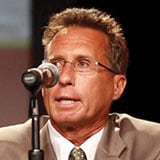A lot of investors, both growth- and income-oriented ones, are looking to juice up their portfolios with higher and higher yielding investment vehicles but the powers of compounding and diversification are simple solutions that don't mean taking on added risks says Steve Mauzy of High Yield Wealth.
What's the conservative income investor to do these days? It's not a trite question when you consider that one-year certificates of deposit (CDs) pay a whopping 1%. To get much more than that, you must commit your money for five years, and even then you'll get only 1.75%.
These paltry yields do little to compound wealth. If you were to continually roll your money over into one-year CDs, it would take nearly 70 years to double your money (and that's if you reinvest the interest). It's no surprise, then, that investors are venturing out to other investments to capture yield.
The rewards for successfully capturing yield are substantial. The table below reveals the ending wealth effect of an initial investment compounding for 30 years at different compounding yields.
Compounding Interest and its Impact on Wealth
Initial Investment Yield Ending Wealth
$10,000 2% $18,133
$10,000 4% $32,433
$10,000 6% $57,434
Obviously, higher yield equates to more income per dollar invested. Problem is, there are no guaranteed 6% yield investments. Heck, there are no guaranteed 4% yield investments.
There is a guaranteed investment that yields above 2%, though: the 30-year Treasury bond yields 3%. Thank you, Ben Bernanke and your dovish interest-rate cohorts at the Federal Reserve, for stomping yield into the ground.
From an economic point of view, low interest rates in and of themselves aren't necessarily bad. An environment of low interest rates may simply be an environment of low inflation, so in real terms you could still maintain the purchasing power of your wealth.
That's hardly the case today. The consumer price index is running near 3% annually, according to the Bureau of Labor Statistics. A ten-year Treasury note yields 1.9%. That means your real rate of return is less than zero: it's negative 1.1% (1.9% minus 3%).
Most investors know they must earn more than 2% or 3% on their money over time to ensure a secure retirement. In this market, that means venturing out on the risk curve. And as more investors venture out on the risk curve, the curve itself becomes riskier.
I've stumbled across a plethora of reports that suggest investors are getting desperate in their search for yield. For instance, many investors are plunging into junk bonds—bonds rated BB or less—with what I believe is reckless abandon. Thomson Reuters reports that activity in junk bonds in the first quarter of 2012 was the highest in more than 30 years, with 130 companies floating $75 billion in high-yield debt.
I can understand why more investors are attracted to these low-quality credits. Thomson Reuters reports that junk-rated debt borrowers paid an average rate of 7.98% on bonds that were sold this year. Eight percent compared to 2% is awfully enticing, until you consider that's the lowest average junk-bond yield since the 1980s.
Sales of collateralized-loan obligations (CLOs)—pools of lesser-credit loans that are packaged into securities—are also gaining traction. CLO sales swelled to $5.83 billion in the first quarter of 2012, which is more than five times the $1.22 billion reported in the first quarter of 2011, according to S&P Capital IQ.
That said, the highest-rated CLO tranches are still fetching only 1.3% to 1.5% over the London interbank offered rate (LIBOR), which means they yield around 2%.
The surge in investor interest in lower-quality debt and the concurrent yield drop in this debt is indicative of a rising risk-seeking environment. That can be dangerous. In my opinion, I don't think investors are being properly compensated for the risk they are taking. Many are simply reaching for yield, risk be damned.
I see similar overreach in the stock market. Many higher-yield investments—particularly in the energy and master limited partnership space—have been pushed precariously high over the past year. Many of these issues, though still of sound quality, have seen their prices pushed to levels that are disproportionate to the value and income they create.
The point I want to emphasize is that I think the risk in reaching for yield has risen in the past six months, as evidenced by the tsunami of investor interest in lesser-rated credits and higher-yield securities.
The best course for individual income investors is to remain diversified and stay focused on the big picture. In other words, don't overweight any particular sector and maintain a portfolio of dividend growers, higher-yielding conservatively run limited partnerships, variable-rate debt, and higher-yield blue chips.
And, above all, be reasonable. Our goal is to maintain a portfolio that yields between 6% and 8%. We view that as the sweet spot of yield that best calibrates risk with reward.
There is a well-worn cliché know by many analysts: “There's been more money lost reaching for yield than at the point of gun.” We don't plan on losing money due to either circumstance, so don't expect to see junk bonds or CLOs in the High Yield Wealth portfolio any time soon.
Subscribe to High Yield Wealth here...
Related Reading:



















